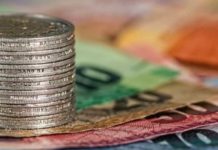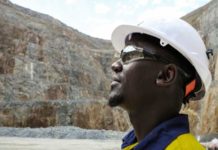
[miningmx.com] — THE tariff increases that the National Energy Regulator (Nersa) awarded Eskom early last year – 25% in the 2010/11 financial year, 25% in 2011 and 2012 – caused many people to fear a crippling of the economy.
It was overdone – the country’s electricity was too cheap and a dramatic adjustment was required to finance the construction of two new coal-fired power stations.
The January 2008 electricity crisis and the load-shedding that followed brought this point soundly home. But Eskom is now considering asking Nersa for another two 25% hikes – one each in the financial years ending in 2013 and 2014.
There’s a good chance that this would deliver a mortal blow to the most important mining and industrial sectors of the economy, especially if accompanied by a carbon tax of R100/tonne, said the Energy Intensive Users Group (EIUG), which consists of Eskom’s 36th biggest clients, including BHP Billiton, Anglo American, Impala Platinum, the respective ferrochrome smelters and Arcelor-Mittal.
This group of companies, which Eskom naturally consults, regularly communicates with Eskom and does not easily publicly criticise the electricity giant.
For instance, this winter the group continually consulted Eskom at times of crisis to prevent a repetition of the January 2008 events.
Eskom has not formally announced that it intends asking for 25% increases, but the EIUG generally knows better than anyone else what is happening in the corridors of Megawatt Park, Eskom’s Sandton head office.
One should not treat lightly the group of influential companies’ warning, in a joint press statement on Friday, of the effect of further sharp tariff increases following the last of three 25% hikes next year.
On Monday, at an information session for media representatives, the group authorised its chairperson, Xstrata executive director Mike Rossouw, to sketch out the finer details of the dangers of further increases.
The increases now being mooted, together with the coming carbon tax, said Rossouw, would result in unprocessed mining products such as platinum-bearing or chrome ores being exported for processing in other countries, probably China or India.
South Africa would then have to import these metals for its own production requirements.
The average price that consumers paid for electricity last year was 42c per kilowatt hour, rising to 53c per kilowatt hour this year. But this is an average price, because wholesale consumers pay considerably less and household consumers considerably more, especially after municipalities add their own margin to cover the costs of distribution and support services.
“This is the overall average price of electricity, including that generated from old and new power stations,’ said Rossouw.
Production costs at Eskom’s existing fleet of power stations is however about 10c per kilowatt hour – and for that from new power stations, restored power stations and independent power producers, from whom Eskom is starting to buy electricity this year, the price ranges from 60c to 100c per kilowatt hour.
Rossouw has objected to Eskom chief executive Brian Dames’ description of the price of 76c per kilowatt hour – which Eskom pays for electricity that it buys from the new, independent power producers – as what South Africa’s electricity should really cost.
“It’s an unfair comparison, because he compares the average retail price with the cost of generation in new infrastructure. He should have disclosed Eskom’s generation costs from new power stations,’ Rossouw said.
The rising cost of electricity against the backdrop of South Africa’s unemployment problem presents the country with huge challenges that gain complexity as the carbon-emission debate increases.
In terms of the Copenhagen Conference South Africa undertook to reduce its carbon emissions by 34% by 2020.
ECONOMIC REALITY
But it is an economic truth that a country consumes more energy as its level of development increases. The country therefore has to reshape into a low carbon-emitting country but at the same time create jobs – otherwise South Africa will face the very events now taking place in Egypt, Tunisia and Libya.
South Africa, however, is responsible for only 1.1% of global carbon dioxide emissions, said Rossouw. Even if we were to reduce this by 100%, it would have very little impact on the global figure.
On the other hand China will, in terms of its commitment, increase its carbon dioxide emissions by 500% by 2020. The commitments that China gave at Copenhagen were relative undertakings, because the relationship between carbon emissions and growth was understood.
India gave its commitment on the same basis – it is to increase its carbon emissions by 350%, said Rossouw.
Brazil, which derives most of its electricity from hydroelectric schemes and therefore produces “clean’ electricity, could cut its carbon emissions by 50% simply by reducing deforestation.
According to Rossouw, South Africa can reduce its carbon emissions by no more than 9% without destroying the economy. “Our undertaking to the Copenhagen Conference clearly explains that the 34% reduction depends on international assistance and global technology transfer,’ said Rossouw.
About 83% of South Africa’s carbon emissions come from energy, which means that South Africa’s dependence on coal has to shift to other means of generating power – a process that will take long and be extremely expensive.
To be realistic, the 34% emissions reduction is unaffordable, especially against the background of the country’s developmental demands. The country will have to find a balance.
South Africa’s mining industry is at a watershed. The cost of operating a mine has increased at a terrifying pace. Since 2003 the cost of platinum production has risen 7.1% above the inflation rate annually. Over these 10 years ferrochrome production has risen as much as 8.4% a year above the inflation rate.
“We will simply have to find a more affordable price trajectory and maintain it if we want to survive,’ said Rossouw. He sees no option other than that, after the current increases, electricity prices should rise no more than the inflation rate.
– Sake24











